The Intuitive Eating Hunger Scale for Food Freedom
- January 30, 2022
- Last Updated: December 2, 2023
- 0 Comments
- Intuitive Eating
The intuitive eating hunger scale is an awareness tool to understand your body’s cues, such as your body’s hunger and fullness levels. It can be a great tool to use when coming from a strict dieting background, repairing a relationship with food, or learning to honor your internal cues again.
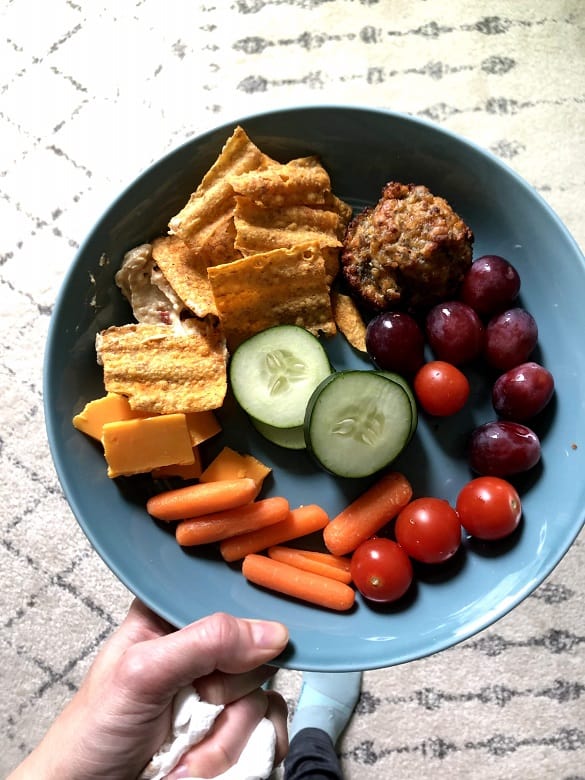
As an Amazon Associate, I may earn from qualifying purchases. You can read more here about our Disclaimer and Privacy Page.
If you haven’t read the intuitive eating book, I always recommend starting there when trying to learn about how your food choices are guided.
Whether we realize it or not, most of us come from a diet mindset or background (maybe you’re a chronic dieter), due to the toxic diet culture we live in and are influenced by.
The intuitive eating principles are really a cry against diet culture, and a way to understand why we make the food choices we do. For example, sometimes we choose to eat out of necessity and physical hunger, while other times, it’s for pleasure or nostalgic reasons.
Within the concept of intuitive eating lies a wonderful tool called the Intuitive Eating hunger scale. I use this in my practice with clients trying to get back in touch with their body’s cues, or those trying to experience hunger again.
Because diet culture may have taken that trust away from us.
Before we can dig into the hunger and fullness scale, we need to understand what hunger and fullness cues look like, and then we can discuss this intuitive eating tool and how we can use it.
Why Use the Intuitive Eating Hunger Scale?
Part of intuitive eating is recognizing that there is room for flexibility in intuitive eating and how to become an intuitive eater is not a destination, but a journey.
Consider this an intuitive eating guide for getting started.
So, why should we even use the intuitive eating hunger scale in the first place? Don’t our bodies understand hunger on their own?
Well, yes and no. You see, we’re all born as intuitive eaters. Babies learn to cry out when they’re hungry, and stop eating when they’re full.

I have fully experienced this with my babies turning away from the breast or pushing the bottle away.
As we grow up, this connection fades a bit, depending on how ingrained we are in diet culture, food rules and more.
So here are some (of many) reasons to use the hunger scale:
- Help to re-establish a connection with your body’s hunger and cues
- Learn the symptoms of being hungry (It may be more than a growling stomach) and have a healthy relationship with honoring that hunger
- Identify physical hunger vs. emotional hunger, to be able to know when we are emotionally eating
- Help us make more balanced food choices that will give us more energy for longer periods
- Know the feelings of hunger to avoid the terrible feeling of being too hungry (“hangry”) or uncomfortably full
- Help you eat more mindfully to strengthen the mind-body connection – It can help you eat mindfully and be present for your meals, while having some sort of scale, or measure, to check in with periodically.
- Helps you find pleasure in your food choices. The goal with eating is to feel full and satisfied after eating, which was hopefully a pleasurable experience. Here is some more information about how to feel satisfied after eating.
How To Use The Hunger Fullness Scale
Now that we know a little bit about why it’s helpful to use the intuitive eating hunger scale, let’s talk a little bit about how to use it.
The hunger fullness scale in intuitive eating is a way to quantify, or gauge, your hunger and fullness levels during a meal or experience.
There’s no pass/fail or right/wrong with the hunger scale chart (see a sample one below). In fact, my hunger fullness chart will likely be different from yours.

Even within my scale, it may vary by day, and even time of day. For example, I’m often very hungry in the morning, and starving by dinner time, especially if I’ve worked out before dinner.
The hunger fullness scale is a subjective scale, rather than an objective measure of hunger and fullness.
The numbers and a brief description of the numbers and effects are as follows:
- You’ve got nothing left – You’re on zero, the gas is out, and you can’t focus on anything at all. This is a very uncomfortable place to be that you want to avoid at all costs. You may even feel dizzy, nauseated, have a headache, and more.
- You still feel very hungry, and likely have more physical symptoms than mental. Though you may feel annoyed, distracted and unable to concentrate, since your brain is low in glucose. You likely can’t stop thinking about food.
- Your stomach may be growling loudly, signaling that you’re ready to eat. You’re likely thinking about food now and imagining what you want to eat.
- You’re not overly hungry but you’re starting to bring attention to the fact that you’d like to eat soon. You could eat if someone handed you something. You are starting to recognize that you may be ready for a meal in the near future.
- Neutral. This is a nice place to be, when you’re not thinking about food at all. Physically, things are pleasant as you’re not suffering from a growling stomach or headache, and your abdomen doesn’t feel distended. This is a great time to work out, do some meal planning for the week, focus on the company of others, or bang out a work project!
- You may be starting to feel some fullness when eating, but not enough to tell you to stop. You’ve taken the edge off. It’s a subtle nudge from your body telling you that it’s starting to digest the food.
- Now you’re at a point where you are feeling physically full and mentally satisfied. You recognize this fullness as “comfortable.” If you were to stop eating now, you would likely be full and satisfied for a few hours.
- You’re veering away from the comfortable fullness into uncomfortable territory. Maybe you realize you took a bite or two more than you needed, or you shouldn’t have grabbed seconds. It’s okay though – this is a good sensation to feel from the body! Your clothes may feel tighter, and/or you may have the urge to loosen your belt buckle.
- You are well into uncomfortable fullness land, and have unbuckled your belt. It’s an unpleasant feeling and you probably want to just lie down.
- You are painfully full. The pressure in your stomach is great, and you may even feel close to being sick. Many people refer to this as “thanksgiving fullness,” but of course, it can happen any time.
I like using this hunger/fullness scale pdf to visually identify where I fall.
Key Points In Making Your Hunger Scale Chart
Here are some key points to keep in mind with the above hunger fullness scale.
- Know what the extremes are and what they feel like. To know what these numbers feel like from you, you have to have felt them before. So it’s not “bad” if you experience them; you want to have a baseline. However, we want to learn from those experiences and implement eating occasions or self-care eating instances that can prevent these extremes.
- You likely won’t feel good if you’re a 1 or a 2 on the hunger scale, aka very hungry, cranky, and likely unable to concentrate. If you wait until you feel like this to eat, it will likely be a chaotic eating experience, where your food choices may feel chaotic, out of control, and somewhat like binge eating. You may eat quickly and overeat.
- Learn what a comfortable fullness level is for you. A level that is physically filling, but also emotionally satisfying. But understand that you’re not “bad” for eating beyond this point. If you eat until you’re an 8, 9, 10 or feel overly full or sick, you didn’t “mess up.” Again, we want to look at these experiences through a lens of curiosity and see how we can learn from this experience next time.
I have a few different hunger fullness scale pdf examples you can use to download or have a reference. Click here for my hunger scale for intuitive eating for athletes and active individuals.
Understanding More about Hunger and Fullness
There are many different kinds of hunger, which is an entirely different topic within the realm of intuitive eating.
However, learning to honor your hunger is a huge step towards food freedom, and the hunger fullness scale can assist you.
According to the dictionary, hunger is:
- a craving or urgent need for food or a specific nutrient
- an uneasy sensation occasioned by the lack of food
- a weakened condition brought about by prolonged lack of food
If you want more information, check out my hunger ebook which walks you through all of the different types of hunger, along with exercises to apply it to your life.
Causes of Hunger
While it seems silly to have to break down the causes of hunger, it can be helpful for people to think about what makes them hungry.
This is geared more for those who have lost touch with eating and hunger cues, and are out of touch with their body, and looking to understand some of the reasons why they may be hungry.
This is also the perfect time to use the intuitive eating hunger scale!
Here are some (of many) causes of hunger:
- prolonged time without eating – it’s normal to be hungry every 2-4 hours
- eating small portions, or less than your body needed at your last eating occasion
- not eating enough protein (more about protein needs here)
- excessive energy expenditure or workouts – more time expending energy leads to a stronger urge for food
- smelling something in the oven – this is more like taste hunger, described above
- emotions – extreme highs and low with emotions can lead to the desire to eat certain foods
- medications – certain medications may increase appetite
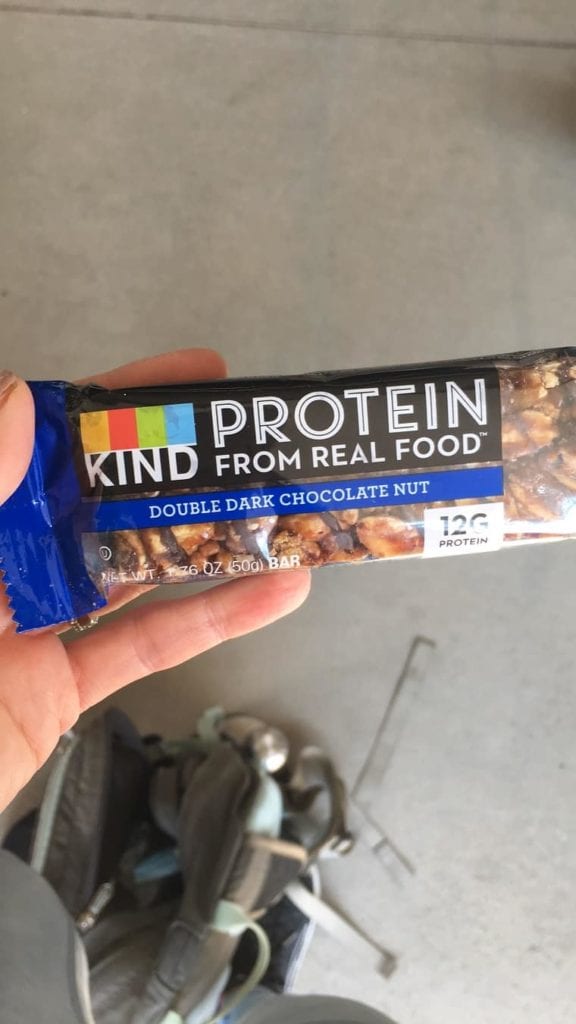
Hunger Cues
Now that we know what hunger is, let’s dig deeper into hunger cues since that’s the basis for the intuitive eating hunger scale.
Most of what I’m talking about here is related to adult hunger and fullness cues.
As adults, we typically relate hunger to a growling stomach and the physical sensation to eat, but hunger, or the desire or need to eat, is so much more.
Actually, hunger can start in the brain with some mental symptoms as well.
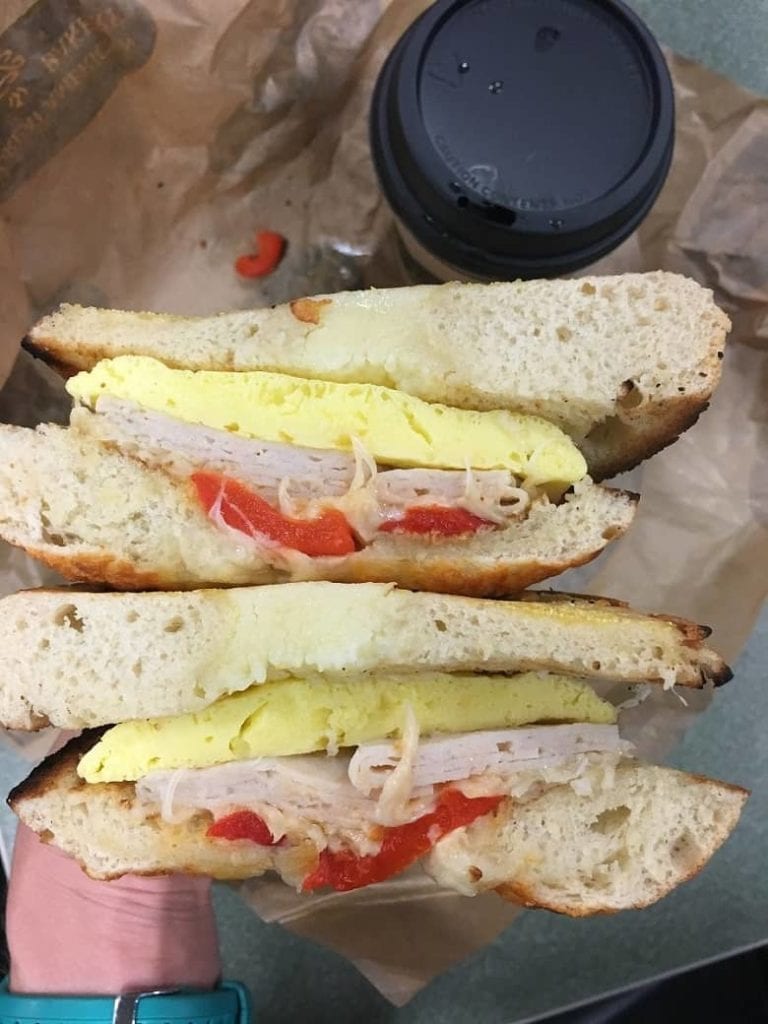
Here are a variety of hunger signals or cues.
- growling stomach or feeling of emptiness
- pit in stomach
- thinking about food
- low energy and fatigue
- lightheaded or dizzy
- inability to concentrate and easily distracted
- headaches
- cranky or irritable mood
Many people who state they have no hunger signals usually aren’t in tune with some of these other, more subtle, signs of hunger. And a history of restriction does blunt our hunger signals, as our bodies adjust to ignoring them for so long.
However, the good news is that it’s possible for them to come back with some practice of the principle, honor your hunger.
Even considering different disease states or recovering from injuries can affect hunger and needs, too.
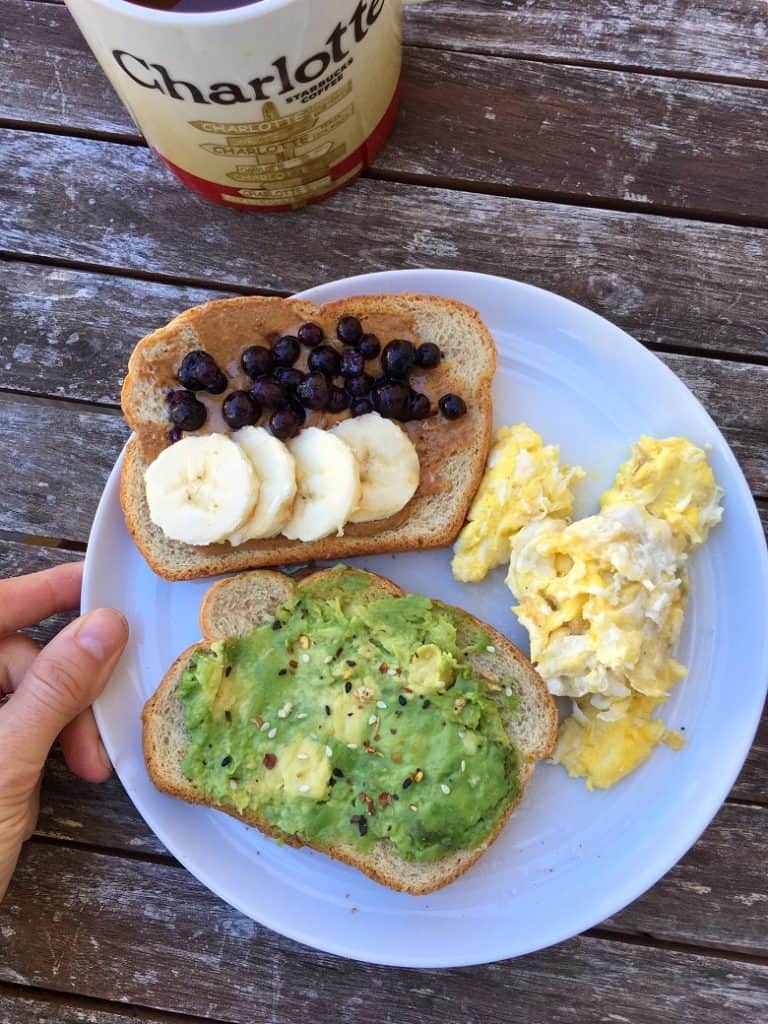
Types of Hunger
There are several different types of hunger. So, in now thinking about the hunger cues above, you can then figure out what type of hunger you may be experiencing.
- Primal Hunger (Biological Hunger) – Primal hunger is just like it sounds, and it’s usually the physical hunger sensation we feel. It’s a strong desire to eat that comes with survival. We are primed to eat foods to survive and if we get to the point where we feel primal hunger, we’ll do just about anything to quench that need. Think of hunters and gatherers, killing animals to eat. We have biochemical triggers that drive our desire to eat in order to survive.
- Taste Hunger – You may not feel physically hungry, but you’re curious about what something tastes like, or the smell of cookies fresh out of the oven has you salivating.
- Practical Hunger – You may not feel hungry but it’s practical for you to eat right now. An example would be you’re about to head into a 3-hour work meeting where you may not have access to your snack, and waiting until after then to eat would put you in “extreme and uncomfortable hunger” (a 1 or 2 on the hunger scale), which is not ideal.
- Emotional Hunger – Another example where you may not feel physical hunger, but there are some emotions that you are sorting through, and food is a “comforting” choice. There’s nothing wrong with this occasionally. If/when food becomes our only choice, it’s time to designate other coping mechanisms. Here are some more ways to differentiate emotional hunger vs. physical hunger.

Many people may confuse hunger cues vs. tired cues as well and this is another thing to keep in mind and check in with yourself about.
Another great example of practical hunger is when you are not hungry after exercise. Your physical hunger may be blunted from the endorphins and hormones of exercise, though this is still a time your body needs fuel, like a post-workout smoothie.
Signs of Fullness
- Painful feeling of bloating
- Feeling tired and ready to sleep
- Not thinking about food anymore
- Uncomfortable or comfortable pressure feeling in abdomen or midsection
- May feel nauseous or sick to your stomach
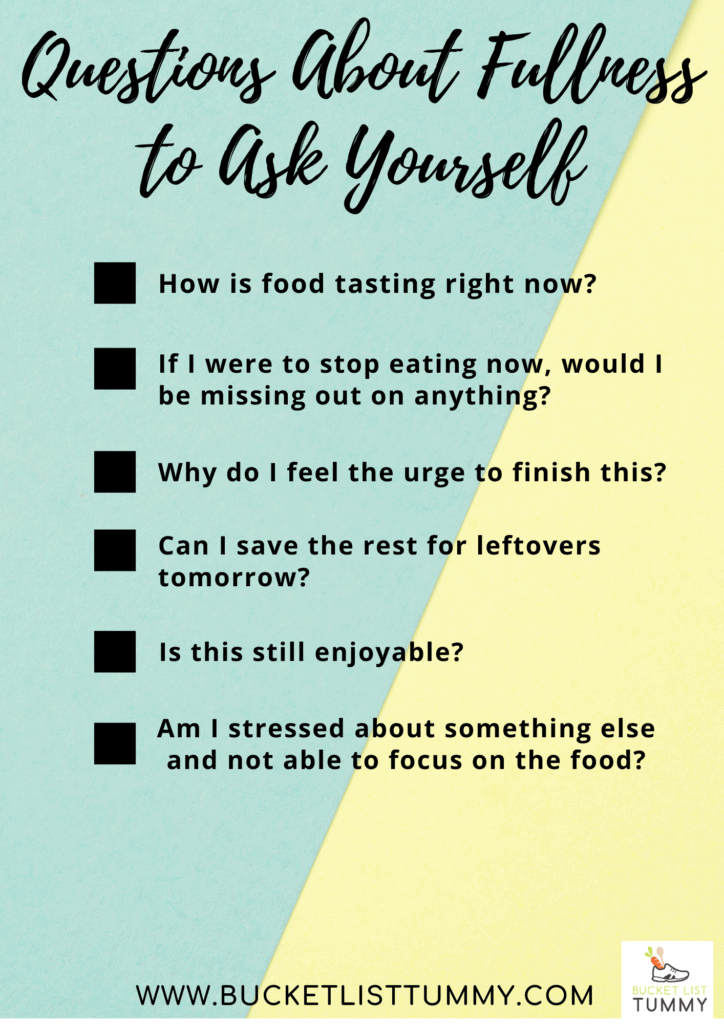
What if the Hunger Scale Chart is Scary For Me?
Using the hunger scale in intuitive eating may not come naturally to you. That’s okay.
For those with a fear of hunger, I encourage you to dig down and think about where that fear of hunger came from?
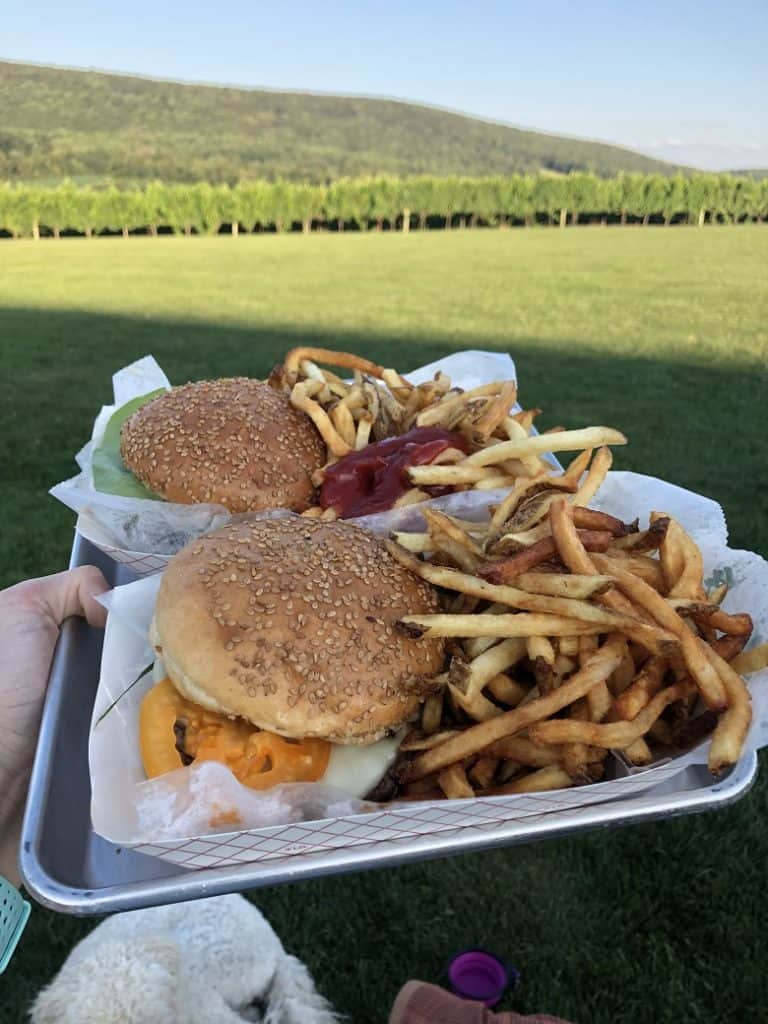
Feeling any sort of anxiety when hungry usually stems from restriction or disordered eating of some sort.
Remember, hunger is a biological sign and need from our bodies.
If you constantly fear hunger, I recommend talking with a therapist and/or dietitian about those fears, where they stemmed from, and how you can overcome them with different types of food exposures.
These intuitive eating resources are a great guide for finding more support.
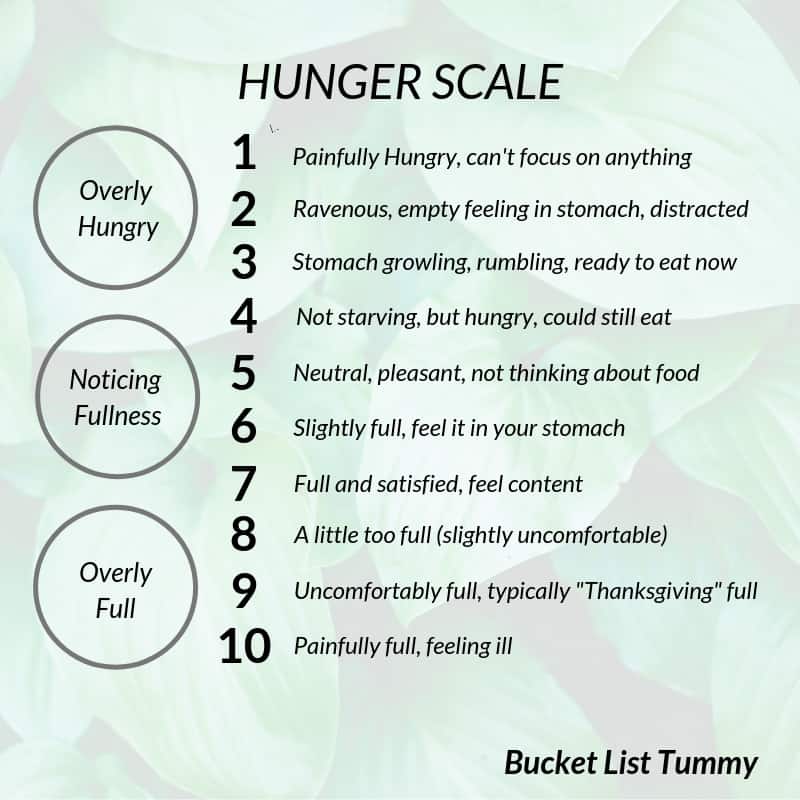
What About the Hunger Fullness Diet?
One thing you have to be weary of when following the hunger fullness scale is turning it into a diet, which just aligns with the toxic diet culture we mentioned earlier.
Since most of us come from a past of diet culture and have suffered from diet culture myths, we like to have rules to follow and it’s easy to think of intuitive eating as just another diet.
However, that is the exact opposite of what intuitive eating stands for, and it is far from the hunger fullness diet. Turning intuitive eating into a diet will backfire in many ways.
Here are some examples of the hunger fullness diet in disguise:
- Never eating if you don’t feel hungry (1-3 on the hunger scale) – What about if you’re celebrating your daughter’s birthday party and she wants to have cake with you? What about when hunger is blunted from stress?
- Eating until you get to the “perfect” fullness every time – Well, what is the perfect fullness? A 6? A 7? The ideal fullness for you may depend on the situation, the last time you ate, the social environment and more.
- Not eating until you’re a set number on the hunger scale – The intuitive eating hunger scale is subjective, meaning there’s no right or wrong and it is what works for you. There is no such thing as perfection.
We don’t want to have intuitive eating rules that dictate us. Instead, the 10 principles are meant to guide us in making choices that honor our nutrition needs and overall body needs, and enjoying food.
And the hunger fullness scale in intuitive eating is how we can practice this in eating situations.
Final Tips
Here are some final tips when starting to use the hunger fullness scale for intuitive eating as a practical tool.
- Be open – It may be different from what you’ve done in the past, but different doesn’t have to be bad. Embrace it and give yourself compassion.
- Try to eat without distractions – Eating while distracted makes it difficult to truly tune in to your extreme hunger, energy levels, and other bodily cues. External factors often take over, so try to be truly present, at least in the beginning of your journey with the hunger discovery scale.
- Pause in the middle of your meal – Oftentimes at the beginning of your journey with intuitive eating, you are on autopilot. Take the time to pause after a few bites to see where you are on the scale. Are you still a 2 or a 3? Would that extra bite put you at a 6 or a 7? This is all about learning about you and your needs, eating habits and preferences.
OTHER POSTS ABOUT INTUITIVE EATING
Explore More Recipes
Intuitive EatingSupport Bucket List Tummy

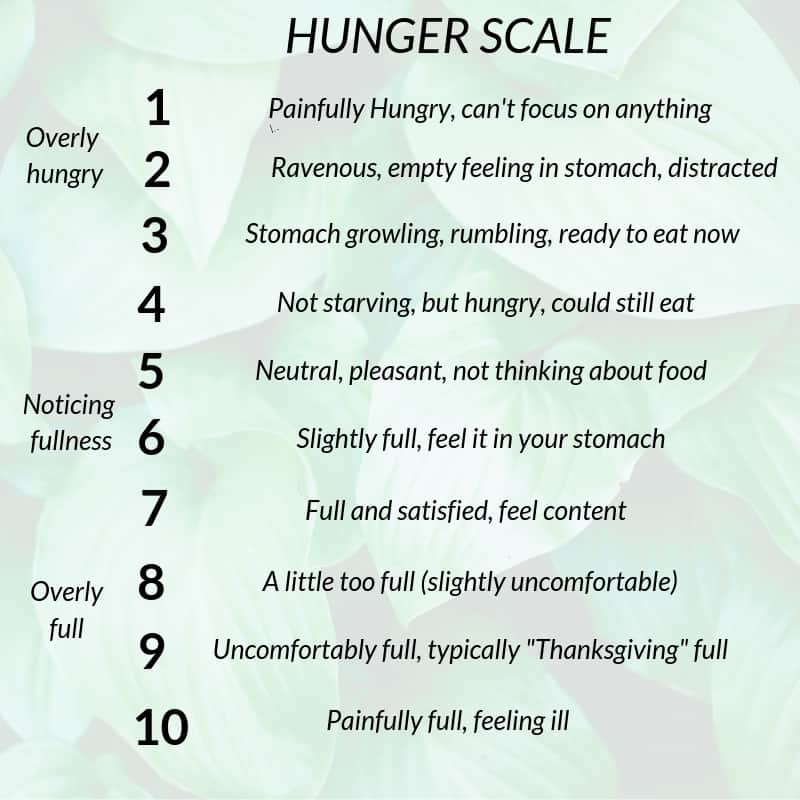






Like This Content?
Support Bucket List Tummy